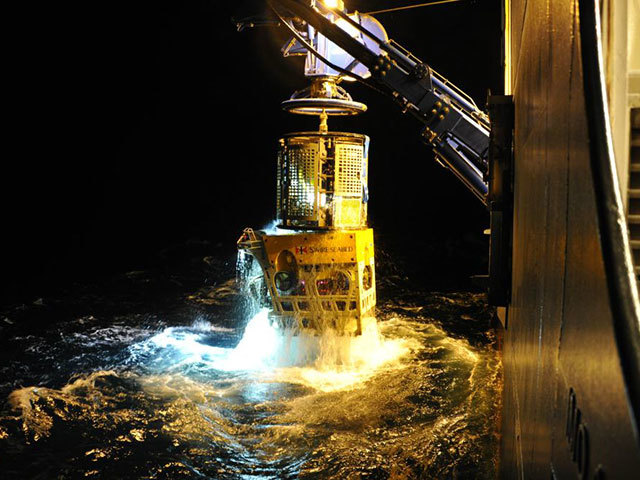
Norway, western Europe’s largest oil producer, is angering a growing number of oil and gas producers after dictating terms for offshore projects worth billions of dollars.
In the latest blow to the nation’s reputation, the opposition bloc last week defied the minority government and decided to force Statoil ASA and other producers to prepare to power North Sea developments from land, raising costs and potentially delaying the projects. That comes after last year’s surprise tax increase on oil output.
“Twice in a year, the framework for how oil companies operate has been changed,” said Erling Kvadsheim, head of licensing policy at the Norwegian Oil and Gas Association, a lobby group that represents firms such as Statoil, BP Plc and Exxon Mobil Corp. “This can make projects less profitable, because you have to include political risk in your calculations, and makes marginal projects less attractive.”
The industry is already struggling with costs and stagnant oil prices. Companies including Statoil and Royal Dutch Shell Plc have postponed projects and cut planned investments. Statoil says parliament’s move last week could mean a current value loss of 20 billion kroner ($3.4 billion) if it’s forced to delay development of the Johan Sverdrup deposit, the biggest discovery in Norway in at least 30 years. Oil service providers have said such a delay could also cost thousands of jobs.
In an unprecedented move, the opposition in parliament last week decided to push for detailed legislation on a field development before a production plan has been submitted. The plan calls for the government to require that companies prepare for an electrification system for three fields surrounding Johan Sverdrup, as part of an effort to cut greenhouse gas emissions.
Offshore installations are typically powered by gas turbines on site and oil and gas platforms contribute more than 25 percent of Norway’s total emissions. By tapping power from land, Norway can use its abundant and clean hydropower.
The electrification instruction comes about a year before the legislature is due to examine the plan for Sverdrup, which may hold as much as 2.9 billion barrels of oil and is slated to go into production by 2019.
“I’ve never seen anything like this before,” said Petter Osmundsen, professor of petroleum economics at the University of Stavanger. The opposition is challenging the procedures for power-supply decisions, where costs are weighed against benefits, casting doubt on what rules apply, he said.
“One thing is the expenses that can be forced on licensees for energy supply,” he said. “The other is that if there’s going to be a political debate about every field, there’s a risk of delays. It’s important to clarify what the policy is.”
Labor, the biggest opposition party, insists the move was exceptional and necessary to reach the country’s emission- reduction goals as the government refused to act according to the wishes of parliament, lawmaker and energy spokesman Terje Aasland said.
“This isn’t the normal proceeding, but a completely necessary intervention,” he said by phone yesterday. “To create and feed uncertainty about the future of the Norwegian shelf, or to make an issue out of this, is in no way necessary.”
Norway is also facing lawsuits from investors in the nation’s gas pipelines, including Allianz AG and Abu Dhabi’s sovereign wealth fund. They are seeking to reverse a 2013 decision by the government to cut the tariffs they can charge to transport fuel by as much as 90 percent. The reductions were proposed less that 1 1/2 years after Norway ended its support for the then AAA and now junk-rated lender Eksportfinans ASA, roiling bond markets as far away as Japan.
The parliament’s environmental demands are running headlong into a struggle for Norway to maintain production as North Sea deposits dwindle after more than 40 years of production. Total output has dropped about 20 percent over the past decade. Investments by oil companies are expected to decline after a peak of 214 billion kroner ($36 billion) next year, the Norwegian Petroleum Directorate predicted in January.
Statoil has warned that expanding the electrification surrounding Sverdrup, which itself is planned to be powered from land in the first phase, could lead to another year’s delay to the already postponed project. Investments on the project’s first phase alone could reach 120 billion kroner.
Statoil is evaluating the impact of last week’s decision, Oerjan Heradstveit, a company spokesman, said in an e-mail.
Aker ASA, which owns parts of oil-service firms Kvaerner ASA and Aker Solutions ASA and half of Sverdrup-partner Det Norske Oljeselskap ASA, has said a delay of Sverdrup could cost Norway thousands of jobs. Norway’s Petroleum and Energy minister Tord Lien also warned last week against the opposition’s move, saying it would introduce “a new type of political risk.”
“For those who think that there are still large resources to be recovered from the Norwegian shelf, this is unfortunate,” said Thore Johnsen, a professor of economics at the Norwegian School of Economics in Bergen. “The result will be a more difficult investment climate on the continental shelf.”
Recommended for you
